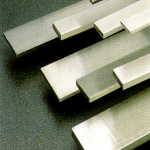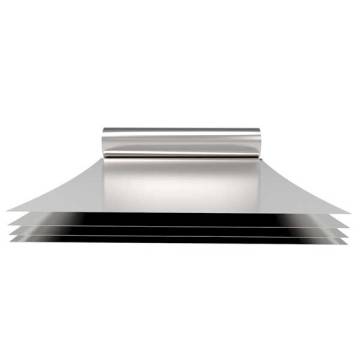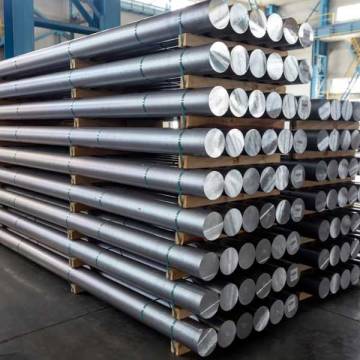Aluminium
5052
Specifications
- 5052
Summary
- Architecture
- Marine sector
- General sheet metal work
- Heat exchangers
- Greyish-white in colour, it is malleable, ductile and conductive to heat and electricity
- A thin inert film of oxide protects the metal surface from further attack, thus giving the metal a form of resistance to corrosion.
- This film of oxide can be further thickened by a process known as the anodizing
- Welding can be made possible.
- Anodized or spray coating possible to achieve different architectural effects
- With its non-corrosive and good mechanical properties, each grade of Aluminium has a high range of applications.
- Aluminium also possesses very high malleability, enabling it to be produced into a very thin foil.
Introduction:
Aluminum 5052 is a non-heat treatable alloy known for its excellent corrosion resistance, high strength, and formability. Composed primarily of aluminum (Al) with magnesium (Mg) as the primary alloying element, aluminum 5052 offers a unique set of characteristics that make it highly valuable in various industrial and structural applications. Here's a detailed write-up on aluminum 5052:
Composition:
Aluminum 5052 is part of the 5xxx series of aluminum alloys. Its typical composition includes:
- Aluminum (Al): 95.7-97.7%
- Magnesium (Mg): 2.2-2.8%
- Chromium (Cr): ≤0.15%
- Iron (Fe): ≤0.4%
- Manganese (Mn): ≤0.1%
- Copper (Cu): ≤0.1%
- Zinc (Zn): ≤0.1%
- Silicon (Si): ≤0.25%
- Titanium (Ti): ≤0.15%
- Other elements: ≤0.05% each, ≤0.15% total
The precise composition may vary slightly depending on specific manufacturing requirements and standards.
Properties:
- Corrosion Resistance: Aluminum 5052 offers excellent corrosion resistance in a wide range of environments, including marine and industrial atmospheres. The addition of magnesium enhances its resistance to corrosion, making it suitable for applications exposed to moisture, saltwater, and harsh weather conditions.
- High Strength: Aluminum 5052 exhibits good strength and toughness, providing reliable performance in structural and load-bearing applications. It offers high tensile strength and yield strength, making it suitable for components subjected to mechanical stresses and loads.
- Formability: Aluminum 5052 is highly formable, allowing it to be easily bent, formed, and shaped into various configurations. It can be cold worked to produce intricate designs and complex shapes without sacrificing its mechanical properties, making it suitable for fabrication and assembly.
- Weldability: Aluminum 5052 is readily weldable using various welding techniques, such as gas tungsten arc welding (GTAW), gas metal arc welding (GMAW), and resistance welding. It forms strong and durable welds with minimal risk of cracking or distortion, making it suitable for manufacturing processes requiring welding.
- Machinability: Aluminum 5052 has good machinability, allowing for easy cutting, drilling, milling, and machining operations. It produces clean and smooth surfaces with minimal tool wear, making it suitable for precision machining and fabrication.
- Anodizing Properties: Aluminum 5052 responds well to various surface finishing treatments, including anodizing, painting, and coating. It can be anodized to enhance its corrosion resistance, durability, and aesthetic appearance, making it suitable for architectural and decorative applications.
Applications:
- Marine Components: Aluminum 5052 is widely used in the marine industry for manufacturing boat hulls, decks, superstructures, and fittings. Its excellent corrosion resistance and durability make it suitable for marine environments subjected to saltwater exposure and harsh weather conditions.
- Automotive Panels: Aluminum 5052 is employed in the automotive industry for manufacturing body panels, chassis components, and structural parts. Its lightweight, high strength, and formability contribute to fuel efficiency, performance, and crashworthiness in automotive vehicles.
- Sheet Metal Fabrication: Aluminum 5052 is commonly used in sheet metal fabrication for producing panels, enclosures, cabinets, and structural components. Its formability and weldability make it suitable for a wide range of industrial and structural applications.
- Architectural Cladding: Aluminum 5052 is utilized in architectural applications for building facades, curtain walls, roofing systems, and decorative elements. Its corrosion resistance, formability, and aesthetic appeal make it ideal for modern architectural designs.
- Electrical Enclosures: Aluminum 5052 is used in the production of electrical enclosures, cabinets, and housings for electronic devices and equipment. Its corrosion resistance, formability, and conductivity properties help protect sensitive electronic components.
- Pressure Vessels: Aluminum 5052 is employed in the fabrication of pressure vessels, tanks, and piping systems for various industrial and chemical processing applications. Its corrosion resistance and strength properties make it suitable for containing and transporting liquids and gases.
Conclusion:
Aluminum 5052 is a versatile and widely used alloy with excellent corrosion resistance, high strength, and formability, making it suitable for a wide range of industrial, structural, and architectural applications. Whether in marine, automotive, sheet metal fabrication, architectural cladding, electrical enclosures, or pressure vessel applications, aluminum 5052 continues to demonstrate its value as a lightweight, durable, and cost-effective material choice. Its versatility and performance make it indispensable in modern manufacturing and engineering endeavors.
Share










